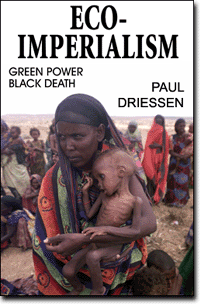Over a third of the world’s population suffers anemia for lack of iron.Half are at risk for numerous diseases because they get too little zinc. A fourth receive so little vitamin A that they suffer incredible rates of blindness and death. But with help from a $25 million Bill and Melinda Gates Foundation grant, a new international consortium called HarvestPlus will combat these afflictions by encouraging production of fortified crops.
Initially, the three aforementioned nutrients will be developed, with the six targeted crops being: beans, cassava, corn, rice, sweet potatoes and wheat. “We don’t just want to produce more food; we want to make it better food,” HarvestPlus spokeswoman Bonnie McClafferty told me. “It’s giving the nutrition community another tool to help.”
Plant “biofortification” need not be biotech; it refers to any process increasing the nutrition of crops. But biotech is the quickest, surest way of achieving the organization’s honorable but admittedly lofty goals – hence the angst and anger of anti-biotech activists. Patrick Mulvaney, of Britain’s Intermediate Technology Development Group, told the U.K. newspaper The Guardian that “Mr. Gates is investing in hi-tech solutions for a serious problem that could be solved by investing in proven methods.”
What does Intermediate Technology offer instead of biotech? It encourages such “solutions” as “improved soil usage” and “irrigation,” as if nobody had thought of these before. Apparently “Intermediate Technology” means “no new technology.” That indeed is a major driving force behind anti-biotech activists in general. To them, all that is new is bad. But while biotech is hi-tech, it’s also proven. The most famous example is golden rice, developed by Swiss researcher Ingo Potrykus and other researchers.
Rice is a staple throughout much of Asia and Africa, but contains no vitamin A. According to the World Health Organization, vitamin A deficiency contributes to approximately two million deaths and 250,000 to 500,000 cases of child blindness annually. Potrykus spliced into rice two genes from the daffodil (giving it its golden color) plus one from a bacterium to give the grain beta-carotene. The body converts beta-carotene to vitamin A.
But rice diets also cause iron deficiency. Perhaps a fifth of all maternal deaths are caused by a lack of iron. Rice contains the mineral, but not in a form our bodies can absorb. So Potrykus and colleagues inserted a gene from a fungus, which makes the iron in the rice useable. Finally, they added a gene from the French bean, doubling the amount of iron in the rice.
Golden rice is now being specialized for planting in different parts of the world. Bio-agricultural companies are also developing other vitamin A-enriched plants, including golden canola (for cooking oil), and golden mustard (used as cooking oil in India and elsewhere). The Monsanto Company is donating its golden corn research to ProHarvest. In parts of Africa, a high beta-carotene sweet potato is already being eaten.
Let them eat liver!” the wealthy, corpulent Vandana Shiva says of the mostly poor and largely vegetarian population of India. But in what smacks of Marie Antoinette’s mythical sneer of “Let them eat cake!” upper-crust, upper-caste Indian biotech basher Vandana Shiva blasted golden rice, saying better alternatives are “liver, egg yolk, chicken, meat, milk and butter.” This assertion from the obese Ms. Shiva is even more ludicrous considering the predominant religion in India is Hinduism and many Hindus will eat neither animals nor animal products.
Meanwhile, Sue Meyer, of the British group Genewatch told the Guardian, “This is a Trojan horse to make [genetically engineered] foods acceptable to poor countries.”
Yet farmers in these countries have already been adopting biotech crops as fast as they can. More than one-quarter of the global biotech acreage was grown in developing countries in 2002,” according a report last January from the International Service for the Acquisition of Agri-biotech Applications.
Nobody claims that the only way to solve nutrient deficiencies is by building them into plants. In the U.S. we’ve long added iodine to salt and vitamin D to milk. But that only works in industrialized countries with regional and national distributors. Try doing that where people get their milk from their own animals.
But none of this matters when you’re damning the “American multinationals” (my favorite oxymoron), when you believe “globalization” is a four-letter word, and you think no price is too high to defeat biotechnology including massive childhood blindness. As long, of course, as they’re not your children.
—
Michael Fumento is the author of numerous books. His book, BioEvolution: How Biotechnology Is Changing Our World, published in October 2003
